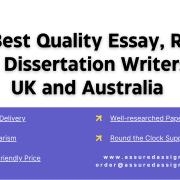Case Study Analysis 1500 to 1800 words +- 10% (worth 40% of overall grade).
The purpose of this assessment is to identify and discuss nursing, ethical and legal issues that can ari se in practice. You need to select one of the two case studies (see below) and apply the Ethical Decision Making Framework (Kerridge, et al., 2013).
This academic paper needs to be written in sentences and paragraphs, not in note form, and your writing needs to be supported by academic references. Do not use dot points. Please review the following link that demonstrates how marks will be awarded Marking Rubric
Note: Use the Harvard referencing system. The end text reference list is not included in the word count.
The layout of the paper will consist of an introduction, main body and a conclusion. Write in the third person and use the following headings from Kerridge’s Decision Making Framework (adapted).
Section 1 Your introduction
Section 1 State the ethical problem (approx 150 words): Offer a brief summary of the issue. What is the main problem? What is the ethical dilemma? Consider ethical, medical, social and legal perspectives. What appear (prima facie) to be the legal issues? For example is it the application of an Advance Directive or informed consent.
Sections 2, 3, 4 & 5 form the main body of your paper.
Section 2 Get the facts (approx 300 words): Find out as much as you can about the problem. What is the medical problem (current and history)? Are there any relevant tests or investigations? What is the patho-
physiology of the disease? What is the prognosis, what are the implications? Is any other treatment available? Are there any psychological/social (family) issues that are impacting the situation? Who are the relevant people? Who will be affected by the decision?
Section 3 Consider the four ethical principles (approx 500 words)
Autonomy: Define autonomy and then consider the following questions in relation to your selected case study:
Is the person mentally capable and legally competent?
Is there evidence of incapacity?
If competent, what is the person stating about preferences for treatment/intervention?
Has the person been informed of benefits and risks, understood the information and given consent?
If incapacitated, who is the appropriate substitute decision-make?
Has the person expressed prior preferences? (e.g. Health Care Directive or has stated verbally). Is the person unwilling/unable to participate in medical treatment/interventions? If so, why?
Beneficence: Define beneficence. What benefits can be obtained for the patient in your selected case study?
Non-maleficence: Define non-
maleficence. What are the risks and how can they be avoided for the patient in your case study?
Justice –
Define Justice. How are the interests of different parties to be balanced in your selected case study?
Section 4 Identify ethical conflicts (approx 300 words) (e.g. between principles): Identify what the ethical conflicts are. Explain why the conflicts occur and how they may be resolved in your selected case study. Refer to the International Council of Nursing Code of Ethics (2012) in this section.
Section 5 Consider the law (approx 250 words): Identify relevant legal concepts and laws and how they might guide management. Consider the registered nurse Standards for Practice (Nurses and Midwifery Board of Australia {NMBA} Standards, 2016) how they apply to the case study. How does duty of care apply to the patient?
Sections 6 & 7 is your conclusion
Section 6 Make an ethical decision (approx 250 words) – why is your chosen option the best approach?
Clearly state the clinical ethical decision and justify. Specify how guiding ethical principles were balanced and why (i.e. justify the decision). Use the information that you have in the Law and Get the Facts section to support the decision (ensure it is evidenced based).
Section 7 Evaluation of the decision, identify a way forward (approx 250 words): Identify the strategies that could be adopted to resolve any conflict that exists (i.e. family issues) using an inter-professional approach.
You must incorporate ten (10) references (Harvard referencing system). These need to include:
The Registered Nurse Standards of Practice (Australia);
The ICN Code of ethics and any relevant legislation relating to your selected case study.
Case Study One
Mrs C is an 83 year old mentally competent women who lives alone since her husband died ten years ago. She was admitted to the hospital, feeling faint, she is bradycardic, with a pulse of 48 and hypotensive, with a blood pressure of 98/58. The doctors and nurses stabilise her condition with medications but later inform her and her only son that she has 'sick sinus syndrome' and needs a pacemaker to regulate the arrhythmia that is present in her heart. After the doctor explained the procedure and risks involved, Mrs C pondered the situation for a while before discussing it with her son and the doctor. Her medical history includes long-
term adult onset diabetes, chronic renal failure and arterial insufficiency, which have resulted in number ous episodes of hospitalisation over the last 8 years. She feels very tired. She decides she does not want a pacemaker. Once Mrs C tells her son her wishes, he is quite upset and meets with the doctor to discuss options. The doctor and her son speak to Mrs C again in an attempt to try and get her to change her mind, but she continues to refuse the recommended treatment. She and her son argue. The doctor tries to explain to Mrs C that the pacemaker is for her benefit, in her ‘best interests’, and involves very minimal risks to her. She tells the registered nurse that she feels that they are ‘ganging up’ on her. Using the ethical decision making framework investigate and analyze this case.











